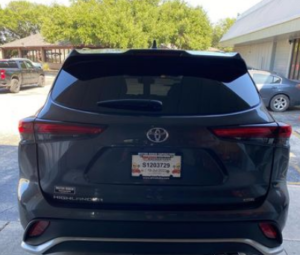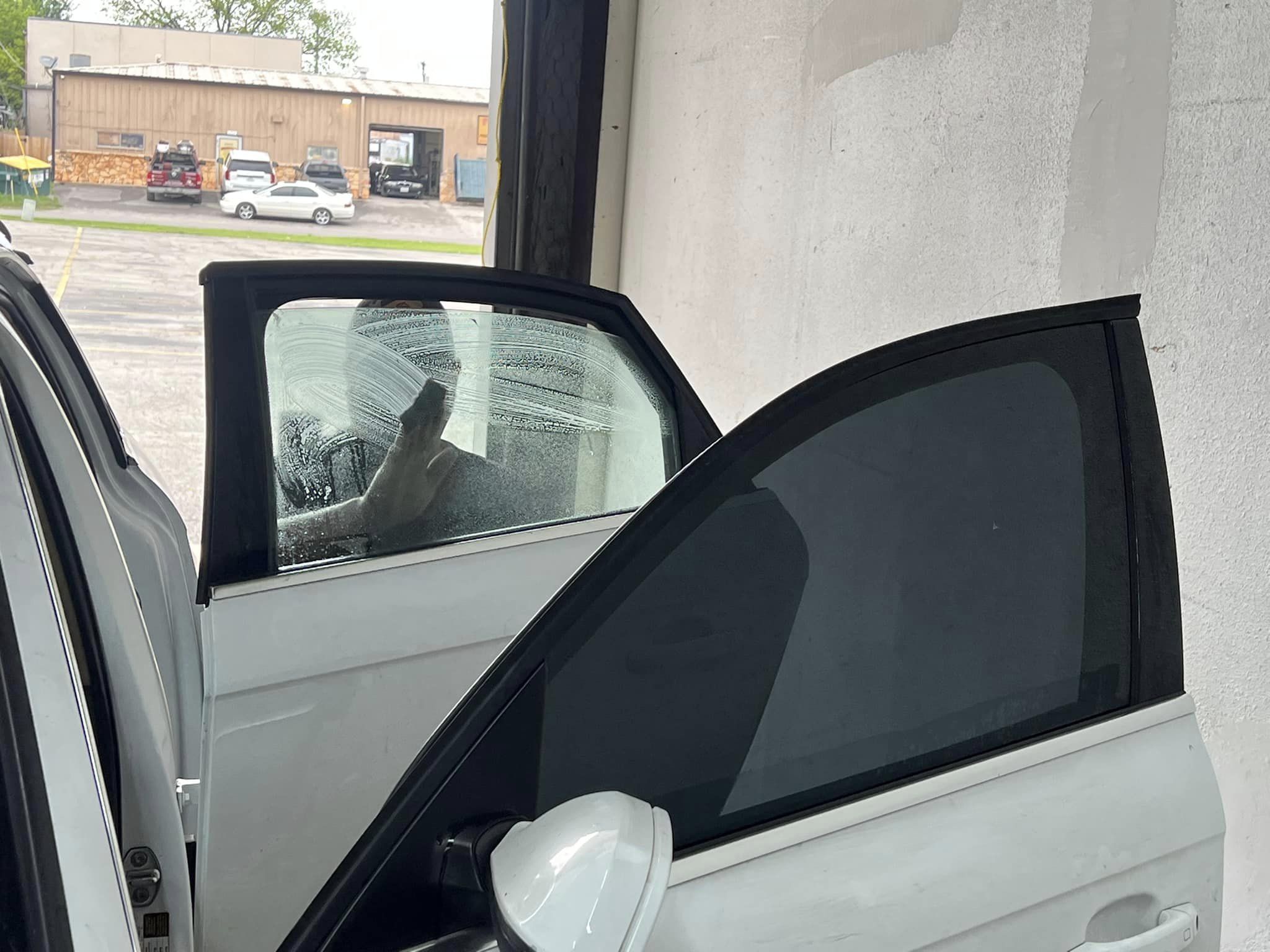Are you considering installing window tint for your car or home? With so many options available, it can be difficult to know which type of window tint is right for your needs. In this article, we’ll discuss the different types of window tint, their benefits and drawbacks, and how to choose the right one for you.
What is Window Tint?
A window tint San Antonio TX is a thin film applied to the interior or exterior of windows in cars, homes, and buildings to reduce heat, glare, and UV rays from the sun. Window tints can also provide privacy and security by reducing visibility into the space.
Benefits of Window Tint
Car window tint can provide many benefits to car windows, including:
- Heat reduction: Window tint can reduce the amount of heat that enters a car or building, making it more comfortable and reducing the need for air conditioning.
- UV protection: Window tint can block up to 99% of harmful UV rays from the sun, protecting the occupants of the car or building from skin damage and reducing the risk of fading or discoloration of furniture and flooring.
- Glare reduction: Window tints can reduce the amount of glare from the sun, making it easier and safer to see while driving or working.
- Privacy and security: Window tint can provide privacy by reducing visibility into the car or building, and can also deter theft by making it more difficult to see inside.
- Appearance: Window tint can enhance the appearance of a car or building, giving it a sleek, modern look.
Types of Window Tint
There are several types of car window tints or window film available, each with its own benefits and drawbacks. Here are the most common types:
Dyed Window Tints
Dyed window tints are the most affordable type of tinted windows and are made by adding a layer of dye to the film. It can provide some heat and glare reduction and can enhance the appearance of the car or building, but may not be as effective as other types of tint. Dyed tint can also fade over time and may not provide as much UV protection as other types.
Metalized Window Tints
Metalized window tint is made by adding a layer of metallic particles to the film. It is more effective at reducing heat and glare than dyed window tints and can provide some UV protection. However, it can interfere with cell phone and radio signals and may not be as durable as other types of tint.
Hybrid Window Tints
Hybrid window tint combines elements of dyed and metalized tint, providing a balance of affordability and effectiveness. It can provide good heat and glare reduction and UV protection, but may not be as durable as other types.
Ceramic Window Tints
Ceramic window tint film is the most advanced and effective type of tint. It is made by adding a layer of ceramic particles to the film, which provides excellent heat and glare reduction and UV protection without interfering with cell phone or radio signals. Ceramic tint is also very durable and can enhance the appearance of the car or building. However, it is also the most expensive type of tint and may not be as widely available as other types.
Crystalline Window Tints
Crystalline window tint is a clear film that can provide excellent heat and UV protection. Unlike other types of tint which have darker tint, crystalline window tint enhances the appearance of the car or building by reducing glare and increasing clarity. However, it is also one of the most expensive types of tint and may not be as effective at reducing glare as other types.
Carbon Window Tints
Carbon window tint is a high-quality film that provides excellent heat and UV protection without affecting signal transmission. It is also very durable and has a sleek, matte appearance.
Reflective Window Tints
Reflective window tint is a type of metalized film that provides high heat and glare reduction. It has a mirror-like appearance on the outside of the windows, which can provide additional privacy and security.
High-Performance Window Tints
High-performance window tint is a hybrid film that combines elements of dyed and metalized tint to provide a balance of affordability and effectiveness. It can provide good heat and glare reduction, UV protection, and appearance enhancement without interfering with signal transmission.
Low-E Window Tints
Low-E window tint is a type of ceramic film that is designed to improve energy efficiency by reducing heat transfer through the windows. It can help to keep the interior of the car or building warm in the winter and cool in the summer, which can save on heating and cooling costs.
Each type of window tint has its own unique benefits and drawbacks, so be sure to consider all of your options when choosing the right tint for your needs.
Factors to Consider When Choosing Window Tint
When choosing window tint, it’s important to consider several factors to determine which type is right for your needs. Here are some things to keep in mind:
Laws and Regulations
Before installing window tint, be sure to check your state and local laws to determine the legal limits for tinting. In some areas, certain types of tint may be illegal or may only be allowed on certain windows.
Heat Rejection
If you live in a hot climate or have a car that gets a lot of sun exposure, consider a type of tint that provides high heat rejection to keep the interior cool and comfortable.
UV Protection
If you’re concerned about protecting yourself and your belongings from harmful UV rays, choose a type of tint that provides high UV protection.
Glare Reduction
If you do a lot of driving or work in an office with a lot of sun exposure, consider a type of tint that provides high glare reduction to reduce eye strain and make it easier to see.
Appearance
Consider the appearance of the tint and how it will look on your car or building. Some types of tint may have a more reflective or mirror-like appearance, while others may be more subtle.
Cost
Window tint can vary in cost depending on the type and quality. Consider your budget and how much you’re willing to spend on tinting.
Conclusion
Auto window tinting can provide many benefits, including heat reduction, UV protection, glare reduction, privacy, and appearance enhancement. There are several types of tint available, each with its own benefits and drawbacks. When choosing window tint, consider factors such as laws and regulations, heat rejection, UV protection, glare reduction, appearance, and cost to determine which type is right for your needs.
FAQ’s
1. How long does window tint last?
The lifespan of window tint can vary depending on the type and quality of the film, as well as environmental factors such as sun exposure and extreme temperatures. However, most types of window tint can last anywhere from 5 to 15 years or more with proper installation and care.
2. Can I install window tint myself?
While it is possible to install window tint yourself, it is generally recommended to have it professionally installed to ensure the best results. Professional installers have the experience and equipment needed to ensure a high-quality installation without damaging the windows or the film.
3. Will window tint interfere with my cell phone signal?
Metalized window tint can sometimes interfere with cell phone and radio signals, but most other types of tint should not have a significant impact on signal strength or quality.
4. How much does window tint cost?
The type and grade of the film, the size of the windows, and the installation location are some of the variables that can affect the price of window tinting. Generally speaking, window tinting costs anywhere from $100 to $600 or more.
5. Can I remove the window tint if I change my mind?
Yes, window tint can be removed if you change your mind or if it becomes damaged or faded over time. However, it is generally recommended to have it professionally removed to avoid damaging the windows or leaving behind adhesive residue.





